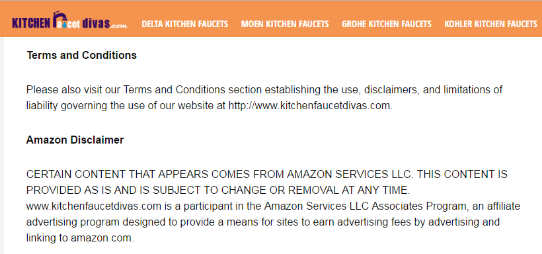In 2015, advertisers wasted $6.3 billion in ad spending as a result of fraudulent advertising practices.¹ This number is only expected to grow, with an anticipated scale of $7.2 billion. Yikes.
Ad fraud produces a high-profit margin and carries no legal ramifications for the fraudsters’ actions, making it a lucrative, illegal business. If they’re caught, fraudsters simply tweak their practices and target new websites, until the next time they’re discovered.
Their business model: create ad fraud, get paid, get caught, start again.

Source: Aol Digital Matters²
While you can’t stop all online ad fraud, you can make it harder for cybercriminals. Let’s take a deeper look into who these fraudsters are, how they go about their fraudulent acts, and what we can do to be the “Superman” of online advertising.
Who Are Online Advertising Fraudsters
Thieves aren’t the only ones committing fraud. Every day, innocent consumers naively commit several forms of online fraud. Perhaps you’re a fraudster, too. Before we get in too deep, let’s take a look at the difference between good bots and bad bots.
Good Bots vs Bad Bots
Superman can tell the good guys from the bad guys, and so can you when it comes to internet bots. Of course, to be the best Superman we can be, we must destroy the bad bots and seek out the good bots.
One example of a good bot is a search engine spider—don’t let the name dissuade you. These internet bots creep through the web, looking for new sites and changes to pages, then index these sites within search engines. These good bots are the reason your search for ‘new year resolutions’ tells you the definition, healthy resolutions, and how to achieve them.

Bad bots are the opposite and the ones we want to avoid. They’re usually part of a botnet (more on that in a moment), which performs illegal or questionable activities like:
- Manipulating content or comments on a site.
- Infecting computers to run malware.
- Taking over an email server.³
- Skewing the results of surveys or responses.
- Scraping content from a blog or site.
Once your computer becomes infected, you become part of a botnet.
Types of Bad Bots Plaguing the Internet
Here are four types of bad bots you should keep an eye out for.
1. Botnets
Botnets (groups of bad bot-infected computers) create a network of infected zombie computers that are controlled by cybercriminals who want to perform illegal plans on your behalf. Think of it as identity theft - would Superman let this happen? Some issues that botnets cause include:
- Collecting Private Information. These evil creatures like to collect all sorts of personal information: credit and debit card information, social security numbers, usernames, passwords, and the list goes on. This information can be used to perpetrate identity theft. That’s not even the worst part, your information may even be sold to the highest bidder.
- Performing DoS and DDoS Attacks. A society of infected computers can simultaneously be manipulated to visit an unsuspicious website or legitimate business. The result is a higher-than-normal volume of traffic hitting the site. Often this results in shutting down a site for its real users.
- Delivering Mass Spam Email. Who hasn’t had this happen to them? You get an email from one of your contacts, pitching a weight loss pill that will “change your life.” Once you click, you realize they got you - you’ve been spammed.
With botnets, you’re bound to get caught up in fraudulent activity. The actual fraudster has hijacked your computer to complete actions like those previously listed, so you, too, may be a fraudster, without even knowing it.
2. Traffic Brokers
Traffic brokers come in many forms and an ad network can easily fall into this category. Many advertising networks have a host of publishers providing traffic, and advertisers who want a piece of that traffic. As a result, ad networks can be seen as the broker between publishers and advertisers.
This practice isn’t abnormal, it’s actually acceptable, and many reputable networks have business models built around it (e.g. Google AdWords). But for every good apple, there’s a bad apple to spoil the bunch. And let me tell you, those bad apples can be deceiving.
Some traffic brokers knowingly purchase traffic generated by a bot farm and then sell it to unsuspecting advertisers and publishers. For the unsuspecting advertisers, if they’re not protected by a third-party traffic scoring solution, they may be throwing away valuable advertising dollars.
For publishers, this is where knowing your feeds comes in handy. Should a publisher unknowingly purchase bad traffic from a traffic broker, and pass that dirty traffic along to an advertiser that monitors traffic quality, they’d be stuck with both an angry advertiser plus the bill of fraudulent clicks. (Not exactly ideal.)
When publishers know exactly where the traffic has originated, they’re more likely to pass along desirable traffic, which is better for both the publisher and advertiser.
3. Click Farms
Scroll through your followers on Twitter. Although Twitter is actively deleting any accounts associated with this type of fraudulent activity, you probably have at least one follower with a profile similar to this one:

Source: Business2Community
And Twitter isn’t the only social media site using Superman techniques to fight back. Facebook has a system that allows them to detect most accounts associated with the act and shut them down.
Click farms have become a profitable business for third-world areas. Dhaka, Bangladesh, a city of 7 million in Southeast Asia, is proclaimed as the international hub for click farms.4 These click farms employ hordes of underpaid workers who are armed with active social media profiles. Since these are real people, it’s very hard to identify them without looking closely into their activities.
For brands, these followers and ‘likes’ aren’t worth the bump in social presence. Click farm workers don’t intend to convert. Worse yet, some click farms are paid to commit click fraud and are clicking on your pay per click ads to drain your budget, all for the benefit of your competitors.
While the latter form of click farm is easier to catch (same IP address routinely hitting the same ad will get flagged), it still is an everyday pain in the butt for brands.
4. Fraudulent Affiliates
One thing you must absolutely understand is that affiliate marketing is a robust industry filled with plenty of legitimate marketers. But with any paid attribution model, there are cheaters, too.
For instance, affiliates make a set commission for each lead they achieve in favor of the advertiser or brand. Fraudsters are lazy and recognize it’s easier to copy them versus trying to join them. Some examples include:
- Creating Fake Clicks or Click Fraud. Click fraud drains funds from a brand by continuously clicking on their paid search ads. By doing this, fraudsters are looking to inflate their own affiliate income or hurt a competing affiliate’s campaign.
- Cybersquatting or Domain Squatting. By feeding off popular brand names, or even the misspellings of common websites, they lure the customer into thinking they’re on that brand's website. This happened to the retailer, The Gap, who filed a lawsuit against the website thegap.com (now defunct).5 Turns out thegap.com was illegally using The Gap’s trademark to trick users into giving up their private information.
- Duplicating a Genuine Affiliate Site’s Content. Not all affiliate sites are shady, some are built very well and are well-trusted within the online community. For example, Kitchenfaucetdivas.com is an Amazon Affiliate. Fraudsters will look to copy successful sites like this, scraping the content and replacing the affiliate ID’s with their own. Kitchenfaucetdivas.com customers may not notice that a new URL, Kitchenfaucetdivas.com.w3snoop.com, replaced their treasured site.

- Spammers. When you take a glance at your personal email, what do you see? Spam. Spam. Spam. Not only do these emails bombard your inbox, but how many actually allow you to purchase a product or service? Not many. Reputable businesses are deprived of purchases while unsuspecting people are fooled by these emails, which keeps the fraud going.
How Can Online Advertising Fraud Be Stopped
Completely putting an end to online advertising fraud is unrealistic. However, if you're like the rest of us trying to stave the bleeding, there are some tactics you can employ to protect yourself:
- Stick With Quality, Relevant Keywords. If you sell cars, bid on the types of cars you sell (e.g. convertibles, trucks, sedans) but not on the long-tail keywords you don’t have (limos, electric, diesel). That’s just a waste of money.
- Use a Great Call to Action. Having colorful and actionable CTA’s can make or break your copy. Poor use of CTAs can make you look unengaged and even spammy.
- Have a Realistic Cost per Click. Remember “you get what you pay for.” So, if you’re demanding a low CPC, there’s an increased chance you’re going to get low traffic quality. While there’s still good traffic available on a lesser CPC, you can’t expect filet mignon on a McDonald’s budget. (But don’t we wish.)
Although online advertising fraud doesn’t appear to be going away anytime soon, we can all do our best to weaken the damages from it while working on a collective and cohesive solution. Let’s go Superman on these frauds!
1. https://www.marketingweek.com/2016/01/26/ad-fraud-the-marketing-industrys-7-2bn-problem/
2. http://blog.productcentral.aol.com/2013/07/12/superheroes-online-threats
3. http://www.digitaljournal.com/technology/ezanga-discovers-a-new-botnet-affecting-advertisers-and-users/article/429804
4. http://www.washingtonpost.com/news/wonkblog/wp/2014/01/06/click-farms-are-the-new-sweatshops/
5. https://legaltimes.typepad.com/blt/2011/11/gap-files-cybersquatting-suit-against-thegapcom.html

